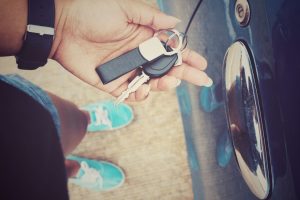A guide for young drivers: Key points you need to know

Every year many young and inexperienced drivers will get behind the wheel. Figures now show, however, that the cost of getting on the road for the first time has soared by 18% in five years -to an average of £6,800 (including lessons, insurance, and the cost of the car itself) – while further research shows many young people don’t feel prepared to drive at all.
Road Safety
It is common knowledge that insurance premiums for younger driver are considerably high. This a result of drivers aged 17-24 being more frequently involved in accidents than any other age group. The collisions also tend to be of a more serious nature, including fatalities. This is due to several recognized reasons. These include a lack of driver experience, that it’s statistically more likely for individuals within this age-group to drive under the influence of drugs or alcohol, to drive in excess of the speed limit, and not wear a seat belt.

Saving Money
How do you find the cheapest cars to insure? According to Auto Express, it’s the group rating that matters – the lower the figure, the cheaper the insurance. The Dacia Sandero 1.2, Renault Twingo and The Vauxhall Corsa are among the cheapest to insure, while research from Adrian Flux shows classic models like the VW Beatle and Ford Anglia can also be affordable options.
When looking for a new insurance policy, consider if you want to name a parent/sibling as a named driver. This not only gives them permission to drive your car – or even drive you home if needs be – it can also help to lower your premium.
To further save money on insurance, consider getting some advanced qualifications. A course like Pass Plus can provide the additional skills needed to lower your risk of an accident.
Cautions
Although it can be tempting, don’t ask to become a named driver on your parent’s policy. This is viewed as fraud, and can end up being costly, both financially and in terms of getting a new policy.
Installing a black box can lower your premiums – but check the terms. Some only offer a discount if they can monitor your driving behaviour, or you could find yourself subject to curfews.
Managing a breakdown
The way you manage a breakdown will depend on where it occurs. If you’re on the road, move the vehicle if you can. Next, put the hazard lights on. The AA advises that you put your sidelights on in foggy/dark conditions. If you have a reflective jacket use it, and if there’s a chance the car could get struck by other vehicles, get any passengers out of the car.
On the motorway, you should only pull over to the hard shoulder in an emergency. Exit the vehicle to the left and park to the far left. Switch on your hazard/side lights, wear reflective clothing and find an emergency phone, but do not attempt to cross the carriage way.
Coping with an accident
Should an accident occur, stop at the scene and note any damage. This includes to people/animals, vehicles, property or fixtures, and document by taking photos. If another driver is involved, give them your contact information, insurance policy details and car registration. Call the emergency services if someone has been injured or there is damage/blockage to the road, and if there are witnesses, get their contact information, too.
Car maintenance
Don’t forget vehicle maintenance. Checking oil, coolant, brake fluid, tyre pressure and tread are among the essential parts of car maintenance and they should all be second nature to the young or new driver. Becoming familiar with your car and what is required to run it smoothly is time well invested.
Filling up
Make sure you know the basics: the type of fuel your car uses, the side the fuel cap sits on and establish how the key cap opens. Turn into the garage forecourt slowly, and then switch off the car engine and undo the fuel cap. Find the right pump – these are colour coded according to the fuel needed.
Remove the pump and place it in the fuel cap. Squeeze the handle to start filling the fuel tank. The nozzle will click off when it’s full. Once you have finished, check the number of the pump used, make sure your car is locked, and then pay for the petrol.
Changing a tyre
- Keep a copy of the manual with you as this will detail the basics.
- Make sure you’re in a safe location away from the road/motorway, and that your car is on level ground.
- Put the handbrake on so the car won’t move.
- Attach your wheel brace to the nuts and bolts to help loosen them. Don’t remove them completely.
- Refer to the car manual for instructions on how to jack your car safely.
- Remove the wheel – look at your manual for instructions on how to do this
- Replace it with the spare, secure it in place with the nuts/bolts.
- The jack can then be lowered and the wheel tightened.
Winter Driving
Winter driving comes with its own set of challenges. Following the maintenance tips in this article will help keep it in optimum condition. In addition:
- Keep ample supplies of anti-freeze, de-icer, windscreen cleaner, and an emergency kit.
- Drive at a slower speed to take into account the icy, snowy roads
- Allow extra time when approaching corners/ bends.
Being a novice driver gives you some independence, but it also comes with a new set of responsibilities. However, by using the above tips, you’ll have the knowledge to save money on insurance and you’ll be able to manage the most common challenges for a new driver.